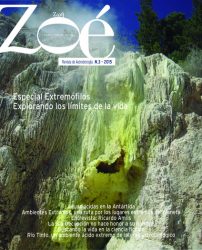The leitmotiv of our Centro de Astrobiología is to understand how life originated and evolved, starting from the boundary conditions given by the evolution of the Universe from the Big Bang to the formation of the Solar System, and from our knowledge of the environment on Earth over the last 3 billion years.
Advances in astrophysics in recent decades have shown us how the evolutionary line of the Universe naturally generates large numbers of planets around a significant fraction of the stars in the Universe. To date, we have already confirmed more than 1000 such exoplanets; in fact, we are witnessing the birth of a new science: exoplanetology. But as expected, the environmental conditions on most of these new worlds differ markedly from those we have on Earth.
Exoplanetologists have defined what they call the Habitability Zone of a star as those orbits in which a rocky planet could be at the right temperature to harbour liquid water and gaseous atmospheres. But even exoplanets in this Habitability Zone will necessarily show large variations in their physico-chemical properties.
The question that immediately arises is: Could life develop in environments very different from those on Earth? In order to answer this question, the search for living things in extreme environments, where a priori nothing should have survived, began many years ago. The surprise was to find that even in the most extreme environments, life had managed to adapt and evolve.
In this issue of Zoé magazine we will review the main advances in the field of extremophilia, which shows us the adaptability of biological processes once they begin. What these results have made clear to us is that if life also arose outside the Earth, it should be a very frequent phenomenon to be found in very diverse environments. We just have to look for it, and that’s where we are.
Miguel Mas Hesse – Director of Centro de Astrobiología







